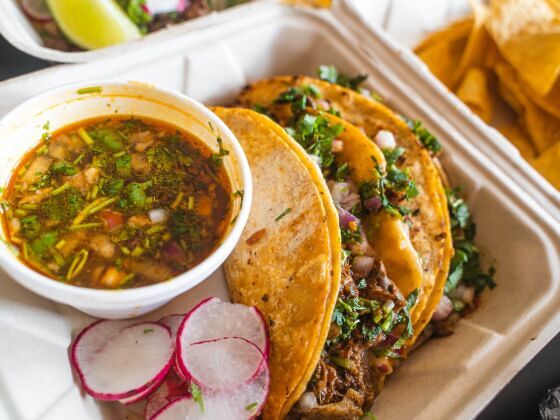“YOU KNOW WE’RE going to smell like the shameful side of a deep fryer,” I say to my roommate as he consolidates our empty food plates into neat stacks.
We’re in the Castro tonight for Dirty Dishes, a semimonthly event that fuses music, drinks, and a rotating cast of some of San Francisco’s most popular street food vendors into one steamy night of immediate gratification. Lumpia Cart is serving up a storm beside us; there’s no way we’ll get out of here without smelling like food.
